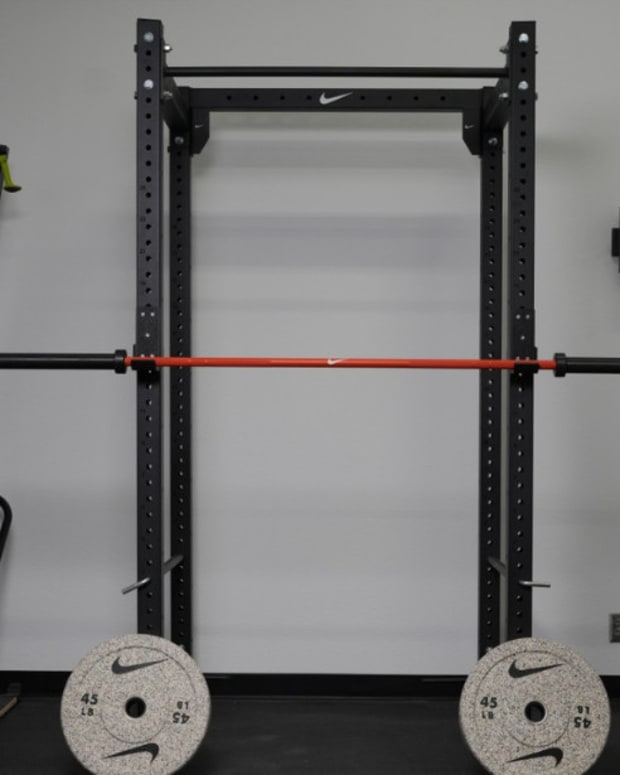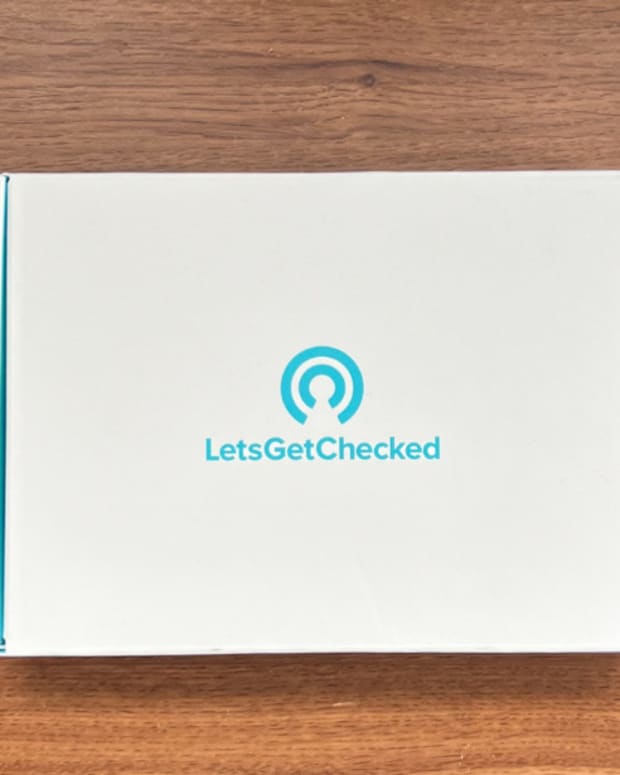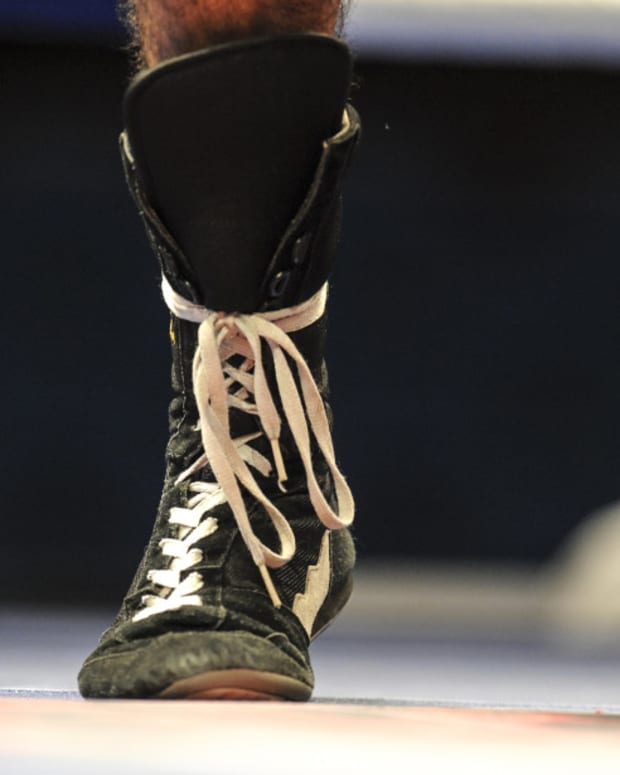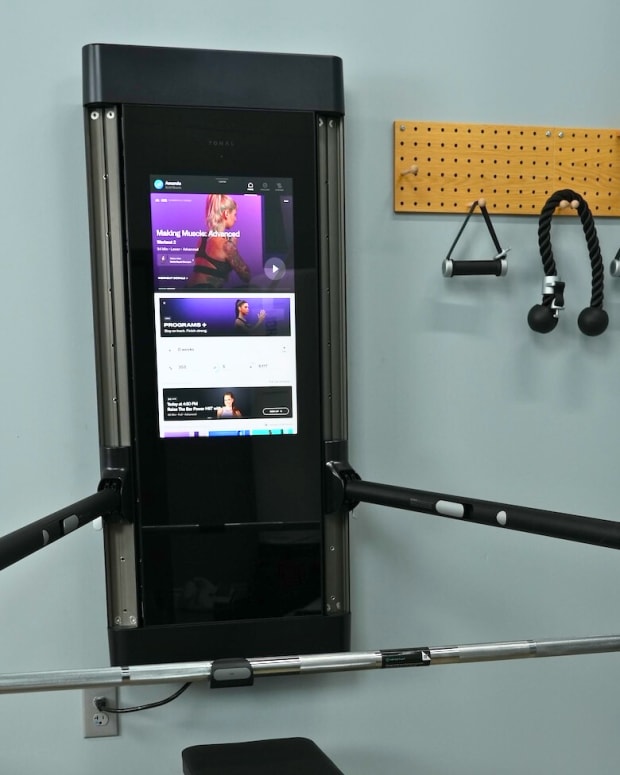The products featured in this article have been independently reviewed. When you buy something through the retail links on this page, we may earn commission at no cost to you, the reader. Sports Illustrated editorial staff are not involved in the creation of this content. Learn more here.
Whether you run five miles a week or 50, chances are you’re in search of a daily trainer with just the right balance of soft cushion and firm-feeling zip. Padded by a thick slab of Nike’s ZoomX and Cushlon foams, the Vomero 17 lands right in the center spot of that Venn diagram. It’s got a bouncy, energetic feel that makes it easy to upshift to a faster pace—or just gradually speed up without even realizing it. And it also has just enough soft squish to feel comfortable and forgiving during a double-digit run.
The Vomero is a great option for fans of Nike’s classic Pegasus trainer who want to dabble in a more max-cushioned shoe but don’t want their midsole to feel heavy, sludgy or slow. This review will further dive into the shoe’s best features and drawbacks—plus what surprised me as a 14-time marathoner who seldom trains in Nikes.
Nike Vomero 17 at a glance:
- Price: $160
- Colors: Pink foam, hyper violet, platinum violet, polar/blue, black, white/photon dust, diffused blue
- Sizes: 5–12 women and 6–15 men (including half sizes); available in extra wide
- Best for: Daily training
Nike Vomero 17 Overview
Upper
Built from engineered mesh, the upper of the Vomero 17 is designed to be lighter, simpler and more breathable than its predecessors. For the most part, I found Nike’s breathability claims to be accurate: The porous mesh material and “mono-filament yarns” formed a stretchy lattice around my foot that vented heat well. There’s extra padding around the tongue and collar for more plush comfort. Nike trainers have a reputation for being narrow at the forefoot, but these have a more generous fit, with plenty of space for toes to splay without sacrificing a secure-feeling fit.
Midsole
The Vomero 17 is a neutral shoe, which means it doesn’t have any added features designed to correct overpronation or otherwise affect the motion of your foot. It’s built with max cushioning in its mattress-thick midsole, which comes courtesy of two of Nike’s proprietary foams: Cushlon and ZoomX. Cushlon is Nike’s standard all-around foam, while ZoomX is a more premium upgrade and designed to be bouncier, more resilient and lighter weight—potentially at the cost of long-term durability (which I can’t comment on yet, but will update this review after more testing). Together the two foams contribute to making the Vomero a solid all-arounder with good energy return.
Just note that if you’re used to a zero-drop shoe, you might find the 9.5-millimeter heel-toe offset to be a bit dramatic. The 39.5-millimeter heel can also take some getting used to, particularly if you prefer a lower stack height and a more connected feel with the road.
Outsole
The Vomero 17 has a high-traction outsole with tiny rubber lugs that help it transition smoothly between roads and groomed, non-technical trails. Those who run often on wet roads might appreciate this grippiness—the Vomero’s outsole sticks to the pavement just enough to prevent slipping without feeling too blocky or sticky underfoot. The Vomero’s outsole is also designed to add durability to the shoe.
What we like:
- Max cushioning with plenty of zip
- Generous amount of space at the forefoot
- Upper is breathable and forgiving
- High-traction outsole
What to consider:
- On the pricey side
- It’s heavier than some max-cushioned shoes
Our Experience Wearing the Nike Vomero 17
I haven’t worn a Nike running shoe for daily mileage in a long time, so I was skeptical that the Vomero 17 could measure up to my usual go-to trainers (I typically prefer to run in Hokas). My biggest area for concern was the upper, since Nike shoes I’ve previously tried were hit-or-miss with available space at the forefoot. Turns out I had no reason to worry—when I first slid my foot into the Vomero, it felt secure but roomy, with plenty of space for my toes to spread out and breathe. I also liked the look of the shoe and the simple, streamlined aesthetic of the upper. The Bloom Run Collection colorway appears mostly white, with pink and blue accents on the Nike swoosh and top of the midsole. All I can say is “challenge accepted” in terms of keeping these pristine white sneakers clean.
Once I actually started running with the Vomero 17, I was impressed by its energy return. Max-cushioned shoes can go one of two ways, in my experience—they can be sludgy and slow, which feels like having weights attached to your ankles, even when the shoe is objectively light; or they can feel firmer and bouncier, with smooth turnover that makes acceleration feel easy. The Vomero 17 falls into the latter camp for me. At 8.5 ounces for a women’s 8, it’s not the lightest shoe, but it feels nimble. I felt zero lag from the 17 when I tried to shift into a higher gear for track intervals, thanks to its excellent energy return.
One area of adjustment for me was the much narrower crash pad on the heel of the Vomero compared to my usual daily trainer, which I ultimately liked but took some getting used to. If I have any complaint about this shoe, it’s with the outsole, which feels a bit too grippy and overbuilt for my needs. I can see the rubber nubs on the Vomero’s outsole working well for trails or wet pavement, but they’re almost overkill for the dry pavement I typically cover. Again, I’m still adjusting, and after more time with this shoe—and perhaps a few spring rainstorms—I can see the sticky outsole becoming my favorite feature. I also suspect this outsole will enhance the shoe’s overall durability, meaning my opinion of it will likely improve with time.
Nike Vomero 17 vs. Nike Vomero 16
The 17 is an upgrade to its Vomero predecessors, with a sleeker, more ventilated, more performance-oriented upper and thicker cushioning under the heel—all at a slightly lighter weight. The 17’s midsole is powered by a mix of Cushlon and ZoomX foams, which is designed to give it more energy return than previous iterations of the shoe, which used less ZoomX and also incorporated a Zoom Air unit. In comparison, the Vomero 16 had a firmer feel and more casual shoe appearance, which contributed to the upper feeling warmer and stuffier in hot weather. Those who want a more connected ground feel might prefer the lower-riding 16; however, those who want more foam underfoot and a more forgiving cushion will likely appreciate the 17’s upgrades.
Nike Vomero 17 vs. Nike Pegasus 40
Although the Nike Vomero 17 and the Pegasus 40 are both neutral daily trainers, there are a few small differences between the two. The Vomero’s midsole has a mix of Cushlon and ZoomX foam, which gives it an overall softer feel than the Pegasus, which is cushioned by React foam and two Zoom Air units. The Vomero has a higher stack height than the Pegasus, which supplies the former shoe with better cushion.
The Vomero also has a more built-up upper than the Pegasus’s, with more premium padding around the tongue and heel, and a more aggressive lug pattern to the 17’s outsole for added off-road grip. Overall, the Vomero feels like an upgrade to the classic Pegasus. However, all this comes at the expense of a small weight difference—the Pegasus is lighter, with a 288-gram weight for a men’s size 10 compared to the Vomero’s 302 grams. The Pegasus 40 is also cheaper than the Vomero 17 by about $20.
Nike Vomero FAQs
What type of shoe is the Nike Vomero 17?
The Vomero 17 is an everyday trainer and a neutral shoe, which means it doesn’t have any added stability features designed to correct overpronation. It’s a good option for runners of all speeds, and both short and long runs—though you might want to sub in a lighter, faster option for race day, if possible.
Is the Nike Vomero good for flat feet?
While the Nike Vomero might work well for some runners with flat feet, it isn’t the best option for most in this group because it’s a neutral shoe and doesn’t have the features that tend to work best for flat-footed runners. These features include a straighter last (less curvy base of the shoe) and the type of motion-control elements you’ll often find in a stability shoe, such as low but firm arch support and a medial post, guide rails or other features to help minimize overpronation.
Related Post: The Best Shoes for Flat Feet
Final Thoughts: Is the Nike Vomero 17 Right for You?
A highly cushioned daily trainer, the Vomero 17 is a great choice for runners of all experience levels and speeds. It’s versatile enough to take on a speed workout on the track or a long, slow jog on a rail trail. That said, it’s not for everyone. If you prefer a more minimalist-feeling shoe, the 39.5-millimeter stack height will likely feel like bouncy foam stilts under your heels. And for those who like very firm race flats, the 17’s midsole will probably feel too soft and forgiving. However, if you like a do-it-all running shoe that has an abundance of padding without sacrificing responsiveness or pep, the Vomero 17 is an excellent option—and substantial upgrade to its Vomero predecessors.
Prices are accurate and items in stock as of publish time.











